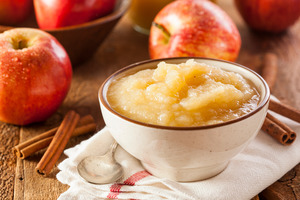TMJ Disorder: Which Foods Should You Eat, and Which Should You Avoid?
March 15, 2024

TMJ disorder can cause quite a few problems in your everyday life, and one of the biggest is that the pain in your jaw can make eating quite uncomfortable. As such, it’s important to carefully consider your diet; some foods can make your TMJ problems worse while others will not. Here’s what you need to keep in mind when planning your meals while you’re managing your TMJ disorder.
What Foods Should You Not Eat with a TMJ Disorder?
A TMJ disorder is an issue with the joints that are used to move your jaw. Overworking said joints can potentially worsen your pain. As such, you should make a point of avoiding foods that are particularly chewy, tough, or crunchy. Notable examples include:
- Steak and other tough meats.
- Hard fruits and vegetables like apples or uncooked carrots.
- Taffy, caramel, gum, and other chewy or sticky treats.
- Certain baked goods such as bagels.
- Hard nuts.
What Foods are Okay to Eat with a TMJ Disorder?
The good news is that there are plenty of foods out there that can still be enjoyed even when you have TMJ disorder. Obviously, you’ll largely want to focus on soft foods that don’t require a lot of chewing, such as:
- Soft fruits such as bananas, applesauce, soft pears, and ripe melons.
- Soft vegetables such as cooked carrots, squash, peas, and asparagus.
- Soft sources of protein such as eggs, tofu, legumes, chicken, and fish.
- Soft grains and starches such as mashed potatoes, pasta, oatmeal, and muffins.
- Dairy products such as cheese, yogurt, or ice cream.
Fruits, vegetables, whole grains, and fish happen to be particularly good choices for patients with TMJ disorder. This is due to the fact that such foods have anti-inflammatory properties, meaning they may be able to help with any inflammation that’s linked to your jaw problems.
What Else Can You Do About TMJ Disorder?
Besides making sure that you’re eating the right things, you should also take steps to have your TMJ disorder treated. This often means wearing an oral appliance that takes some of the stress off your jaw joints. A BOTOX treatment can also be used to temporarily reduce your pain, and performing certain facial and jaw stretches at home can also help. Surgical treatments for TMJ disorder exist, but it’s typically recommended that you try more noninvasive options first.
Even with the pain of a TMJ disorder, you can still enjoy a varied, healthy diet. Talk to your dentist to see if they have any additional suggestions regarding what you should or shouldn’t eat when you’re trying to find relief from your jaw pain.
About the Author
Dr. Kinnari Jariwala is a graduate of the University of Missouri-Kansas City School of Dentistry and belongs to the American Academy of Craniofacial Pain. At her current Albuquerque practice, Center for Dental Sleep Medicine and TMJ of New Mexico, she is proud to provide oral appliances and other treatments for TMJ disorder. To schedule a consultation with Dr. Jariwala, visit her website or call (505) 433-2107.
No Comments
No comments yet.
RSS feed for comments on this post.
Sorry, the comment form is closed at this time.
